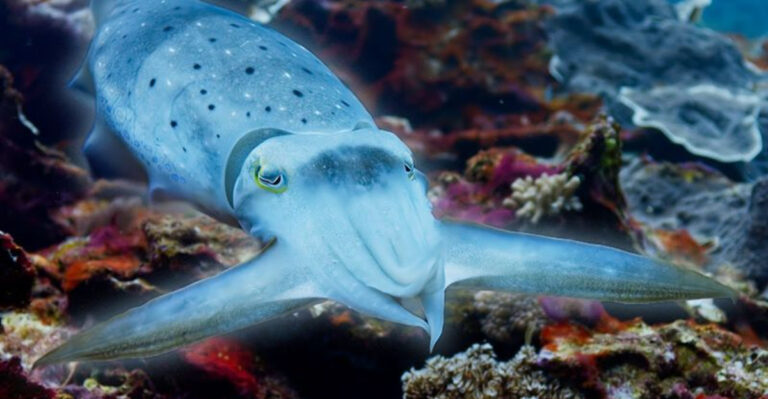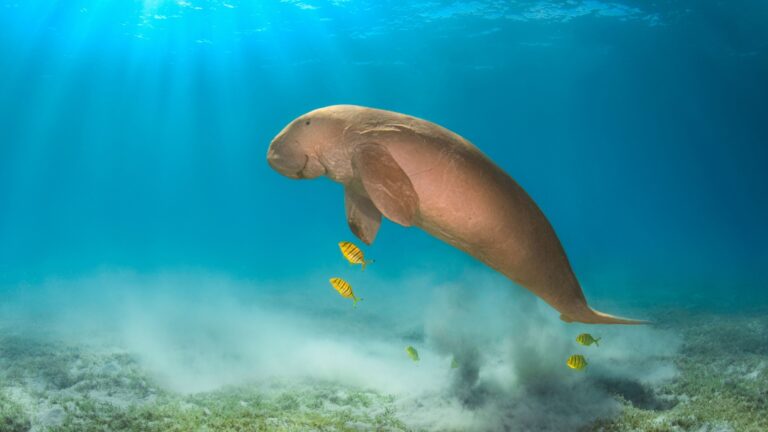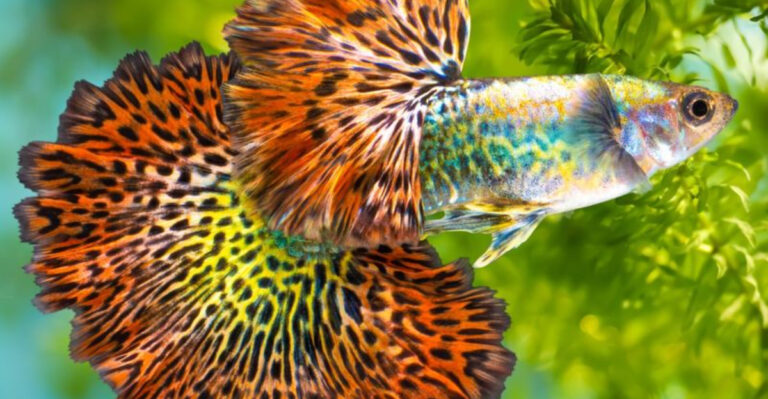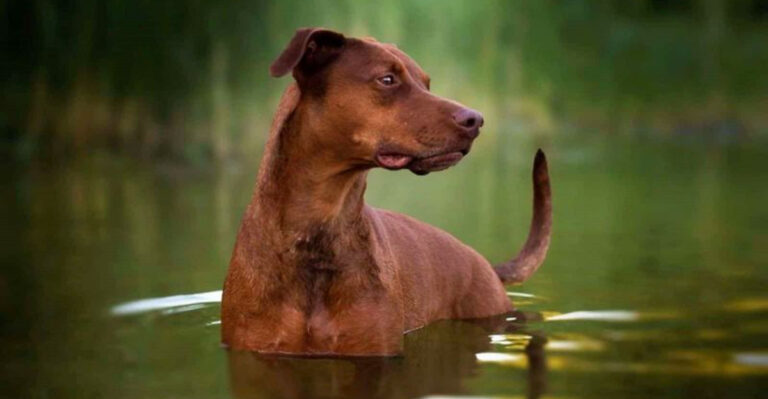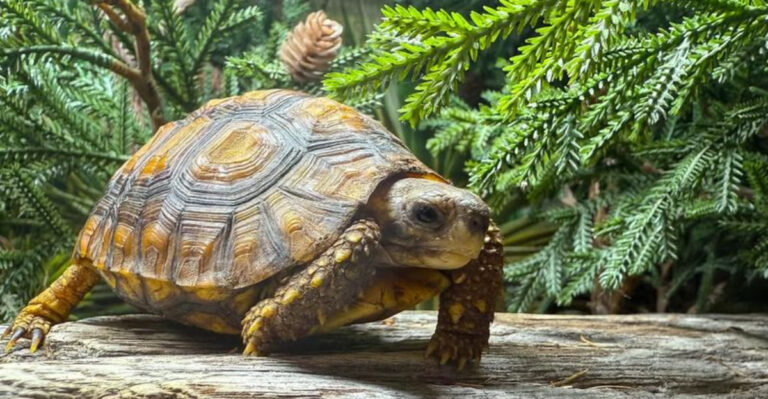12 Prehistoric Creatures Perfectly Preserved In Ice
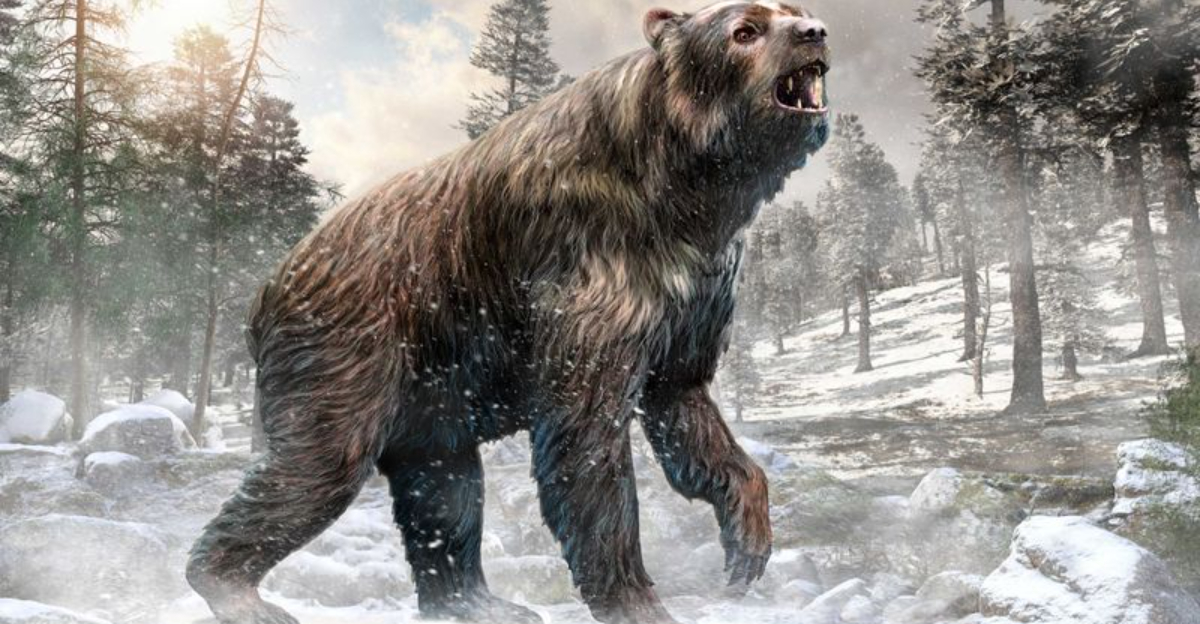
The icy embrace of our planet’s coldest environments has gifted us with extraordinary glimpses into the past.
Nature has crafted these frozen time capsules, preserving magnificent creatures from a prehistoric era, allowing us to witness, study, and marvel at these ancient beings.
Each of these perfectly preserved specimens tells a unique story of life, adaptation, and the relentless march of time.
Journey with us through the ice as we explore these fascinating remnants of the past, where every discovery is a bridge to a world long lost to history.
1. Cave Lion Cub
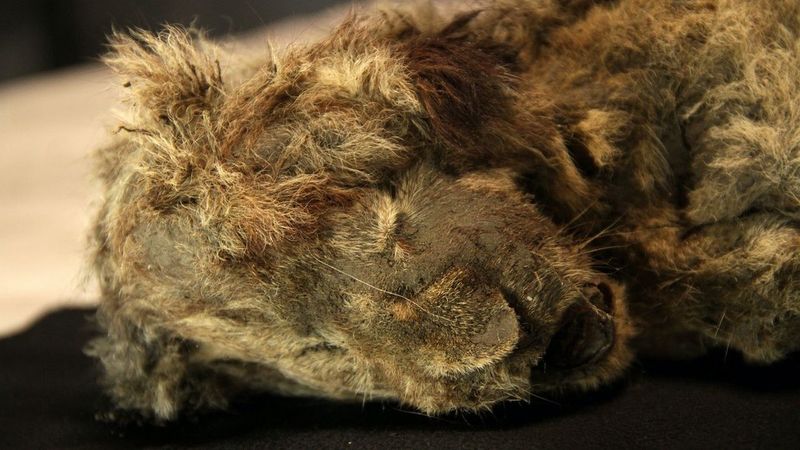
The discovery of a cave lion cub, nestled in the ice, has stirred the scientific community. Frozen for millennia, this cub, with its golden fur and lifelike appearance, offers a window into an era when these majestic predators roamed freely.
Two explorers uncovered the cub in the Siberian permafrost, where it lay undisturbed through ages of change. Its preservation is so pristine that individual strands of fur and the delicate features of its face are still visible.
Scientists are particularly enthralled by the cub’s internal organs, which appear to be intact. This offers an unprecedented opportunity to study the health and diet of these ancient predators. Researchers hope to extract DNA that could reveal more about the genetic diversity of these great cats.
Beyond its scientific value, the cub evokes a sense of wonder at the power of nature’s preservative forces. As modern-day lions face threats, the cave lion cub serves as a poignant reminder of the fragile balance between survival and extinction. Its presence in the ice is both a treasure and a warning from the past.
2. Steppe Bison
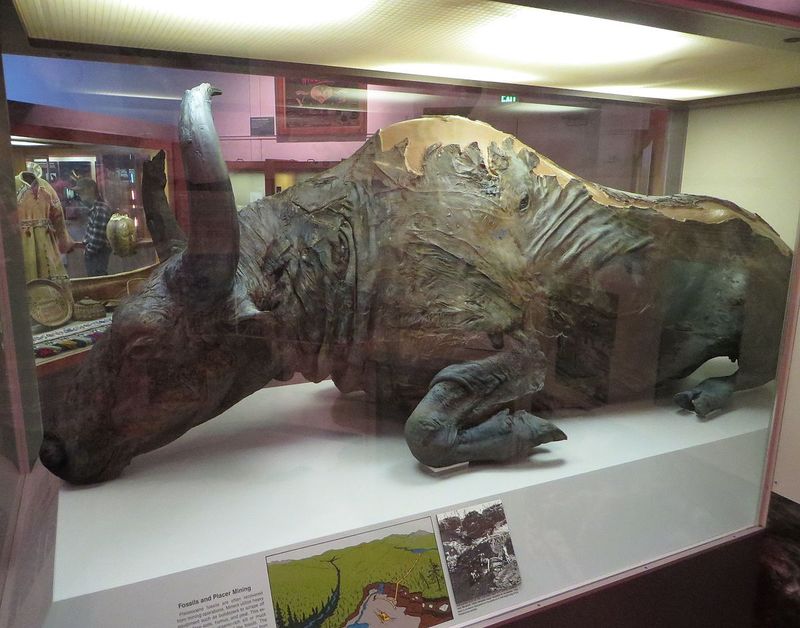
The steppe bison, found in the Siberian tundra, is an awe-inspiring sight, frozen with its thick fur and formidable horns perfectly preserved.
This impressive beast, emblematic of the Ice Age fauna, once dominated the steppes with its sheer size and strength. Its preservation, dating back thousands of years, provides invaluable insight into the biodiversity of past ecosystems.
The bison’s robust frame, perfectly encased in ice, suggests it fell victim to the harsh climate that eventually sealed it in its frozen tomb. Scientists are fascinated by the detailed preservation of its musculature and fur, allowing them to study the animal’s physical adaptations to its environment.
The bison’s DNA is a treasure trove for evolutionary biologists, offering a glimpse into the genetic makeup of ancient herbivores. This frozen giant stands as a silent testament to the era of megafauna, a time when creatures of incredible size roamed the earth, now revealed through the lens of time.
Such discoveries connect us to our planet’s rich natural history, providing lessons in resilience and adaptation.
3. Frozen Foal
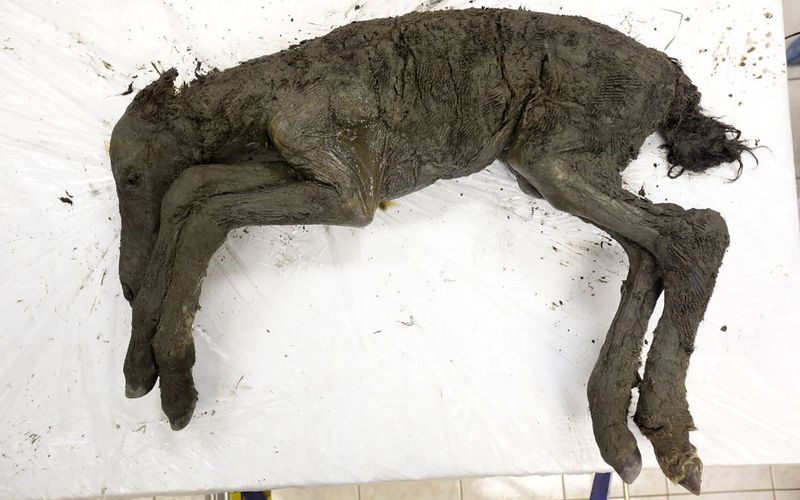
The frozen foal, discovered in the Siberian permafrost, is a poignant reminder of the prehistoric world. Preserved with striking detail, this young horse, estimated to be 42,000 years old, offers a rare glimpse into the lives of ancient equines. Its soft brown fur and long lashes are so well-preserved that it appears almost alive.
Researchers have been able to extract liquid blood and urine, opening avenues for studying the physiology and health of ancient horses. The foal’s condition suggests it perished in a mudslide, which quickly froze, preserving it for millennia. Its internal organs are remarkably intact, providing insights into its diet and lifestyle.
This discovery has sparked interest in the possibility of cloning, as scientists explore the genetic potential locked within its DNA.
The foal’s preservation serves as a bridge between past and present, offering a tangible connection to the world of prehistoric horses. It stands as a symbol of the mysteries still hidden within our planet’s frozen realms, waiting to be uncovered by intrepid explorers.
4. Mummified Mammoth (Nun Cho Ga)
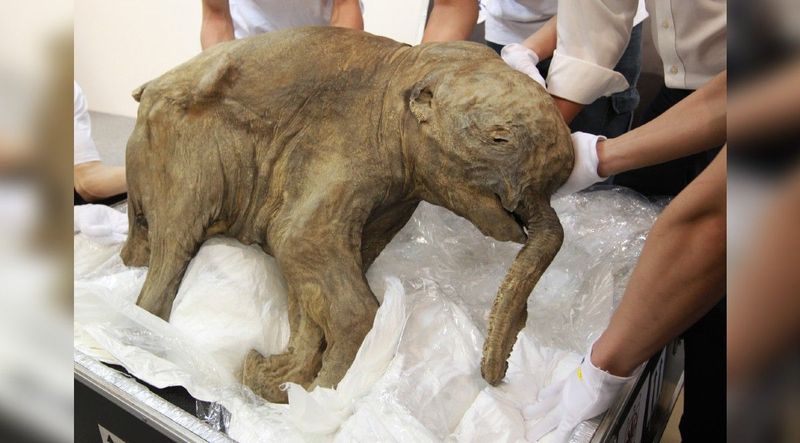
Nun Cho Ga, a mummified mammoth, emerges from the ice like a relic from a bygone era. This magnificent creature, with its long, matted fur and towering tusks, presents a breathtaking vision of the past.
Unearthed in the Yukon, Nun Cho Ga provides a rare opportunity to study the life of these iconic giants that once thundered across the northern landscapes.
The mammoth’s exceptional preservation allows researchers to examine its physiology, diet, and even its last meals. Its fur and skin are so well-preserved that they offer clues to the mammoth’s adaptation to cold, harsh environments.
The study of its tusks reveals growth patterns and life history, painting a picture of this mammoth’s life journey.
Nun Cho Ga is not just a scientific marvel but also a cultural symbol, reflecting the deep connection between ancient peoples and the mammoth.
This frozen giant is a reminder of the wonders locked within our world’s icy vaults, waiting to be rediscovered.
5. Prehistoric Bear
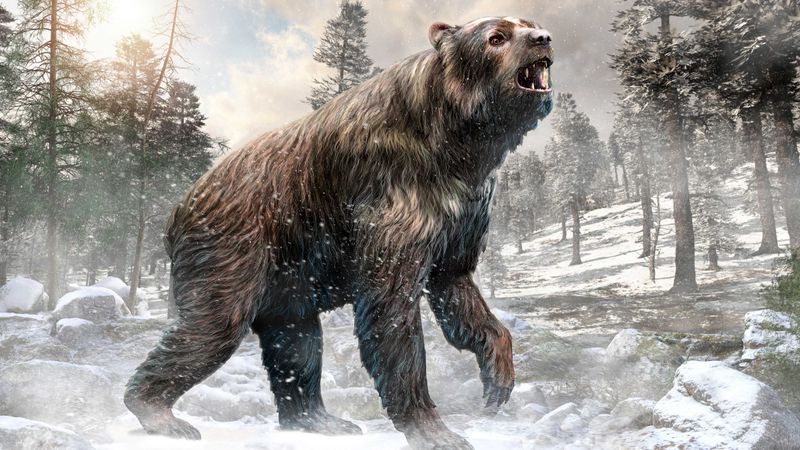
The prehistoric bear, uncovered in the icy expanses of Siberia, is a formidable sight. With its thick fur and powerful build, this creature is a testament to the adaptability and strength of ancient fauna. Its preservation offers an unprecedented look into the life of a species that once roamed the northern forests.
The bear’s remains, including intact muscles and organs, provide insights into its diet and health, offering clues about the environment it inhabited.
Scientists are eager to study its DNA, hoping to unravel the genetic secrets of this ancient predator. The discovery has sparked interest in understanding how such large mammals adapted to the challenges of the Ice Age.
This bear stands as a reminder of the vast, untamed wilderness that once covered much of the earth. Its presence in the ice is a poignant echo of a world where nature’s giants ruled, a world now revealed through the lens of time and exploration.
As we learn more about this astonishing creature, we gain a deeper appreciation for the intricate tapestry of life that has shaped our planet.
6. Hibernating Squirrel
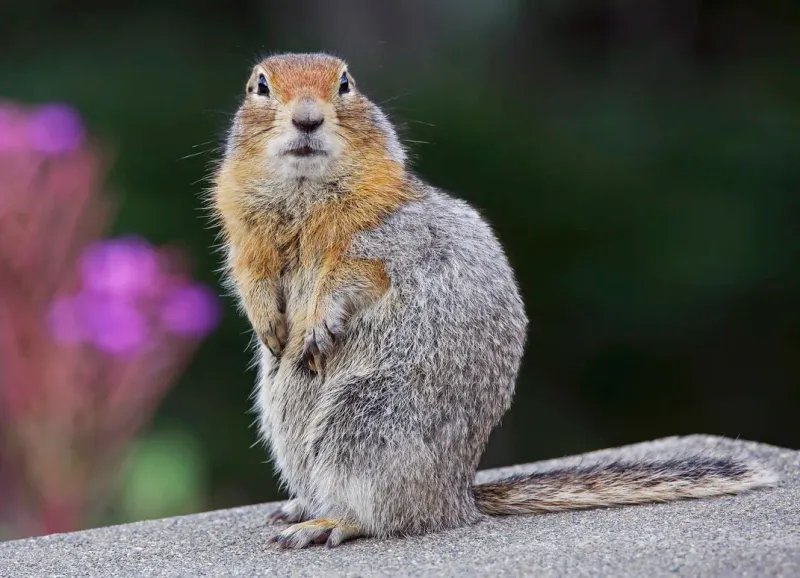
The discovery of a hibernating squirrel, preserved in ice, offers a charming glimpse into the survival strategies of small mammals during the Ice Age. This tiny creature, curled up as if in a deep slumber, showcases the incredible adaptations that allowed it to endure harsh climates.
Scientists are fascinated by the squirrel’s condition, which reveals remarkable details about its biology and hibernation habits. Its fur is impeccably preserved, and its curled posture indicates a natural state of torpor, a survival mechanism employed during long, cold winters. The study of this squirrel’s remains offers insights into the evolutionary strategies of small mammals.
The preservation of this diminutive creature serves as a reminder of the resilience and ingenuity of life in the face of adversity.
As researchers continue to explore the icy depths of our planet, such discoveries highlight the intricate web of life that existed long before modern humans appeared. This little squirrel, frozen in time, embodies the enduring spirit of nature’s smallest survivors.
7. Preserved Wolf Pup
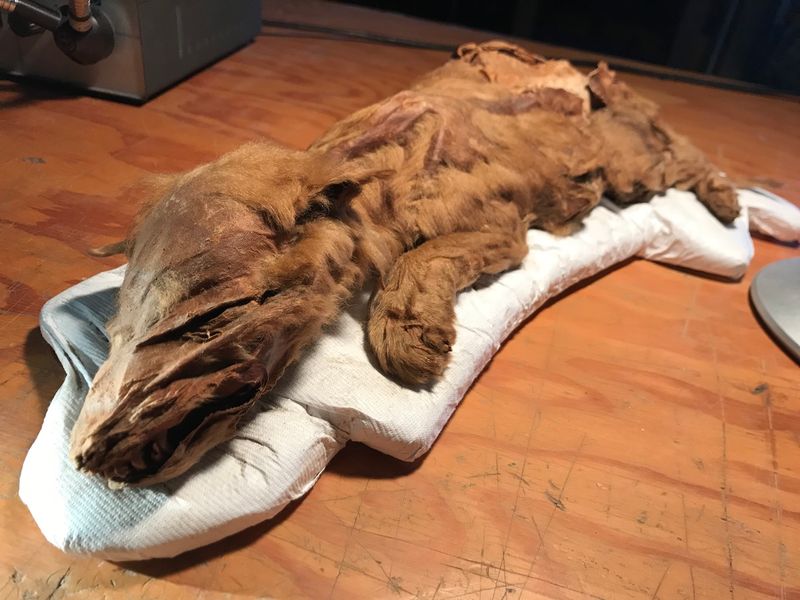
The preserved wolf pup, found in the icy tundra, captivates researchers with its lifelike appearance. With grey fur and sharp features, this young wolf embodies the spirit of the wild, offering a rare glimpse into the early life of a top predator. Its preservation allows scientists to study the anatomy and development of prehistoric canines.
The pup’s intact organs and tissues provide a wealth of information about its diet and health, shedding light on the challenges faced by young wolves in a harsh environment.
Researchers have identified signs of early development, offering clues about the growth and behavior of ancient wolf packs.
This wolf pup stands as a symbol of the enduring power of nature and the mysteries hidden within the ice. It connects us to a time when wolves roamed vast, untamed landscapes, serving as both predator and protector of the ecosystem.
As we uncover more about this fascinating creature, we gain insights into the past and the intricate dance of life and survival.
8. Woolly Rhinoceros
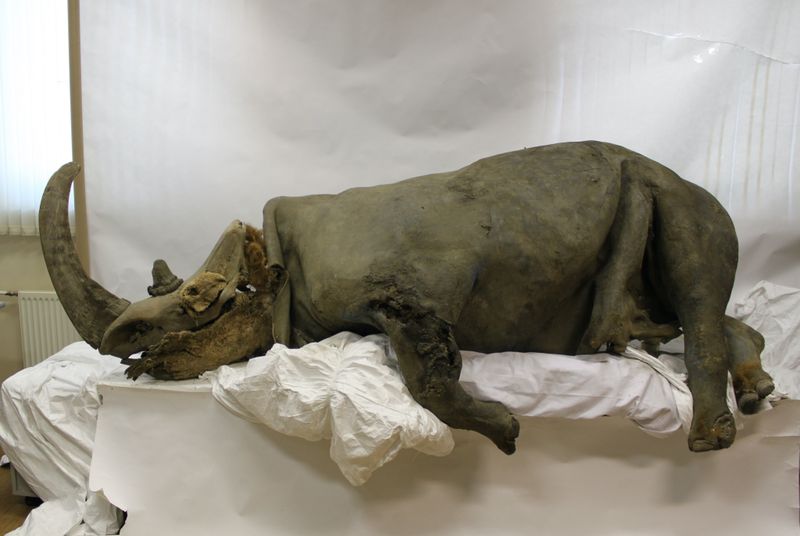
The woolly rhinoceros, perfectly preserved in ice, is a majestic reminder of the megafauna that once roamed our planet. With its thick grey fur and prominent horn, this creature exemplifies the adaptation to cold, glacial environments. Discovered in Siberia, its preservation offers a rare opportunity to study these ancient giants.
Scientists are particularly interested in its horn, which holds clues about its life and habitat. The rhino’s fur and skin are so well-preserved that they provide insights into the animal’s adaptation to frigid climates. Researchers have also extracted DNA, hoping to piece together the genetic story of this incredible creature.
This woolly rhinoceros serves as a testament to the power and beauty of nature’s creations. Its frozen form connects us to a time when the earth was dominated by immense creatures, a time of wonder and exploration. As we study this ancient giant, we are reminded of the rich tapestry of life that has shaped our world, offering lessons in resilience and adaptation.
9. Lena Horse
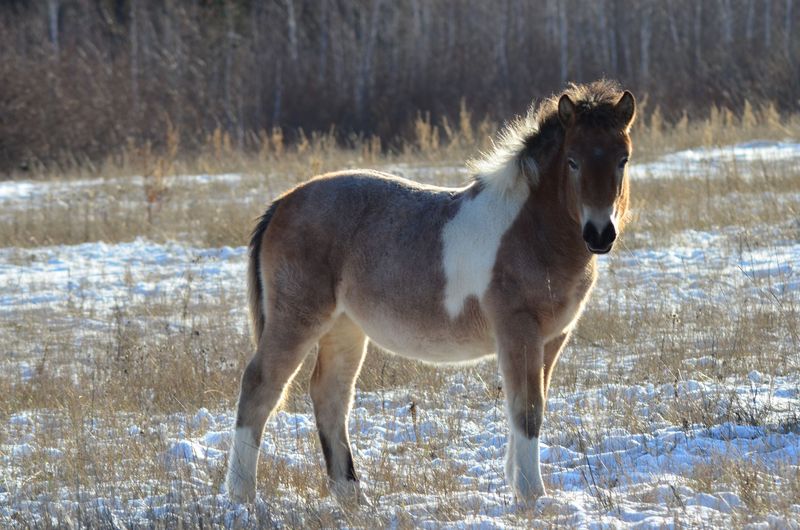
The Lena horse, preserved in the cold embrace of ice, embodies the grace and beauty of prehistoric equines. Its sleek brown coat and elegant stance capture the imagination, offering a window into a time when these magnificent creatures roamed freely across vast landscapes.
Discovered in Siberia, the Lena horse’s preservation is so detailed that its muscles and skin are nearly intact. Researchers have been able to study its diet and health, gaining insights into the lifestyle and environment of ancient horses.
The extraction of DNA provides a genetic link to modern equines, revealing the evolutionary journey of these fascinating animals.
This discovery serves as a reminder of the rich biodiversity that once flourished on our planet. The Lena horse connects us to our natural heritage, evoking a sense of wonder and curiosity about the world that existed long before us.
As we explore the frozen depths, we continue to uncover the stories of the past, each discovery adding to the tapestry of life that defines our planet.
10. Prehistoric Penguin Colony
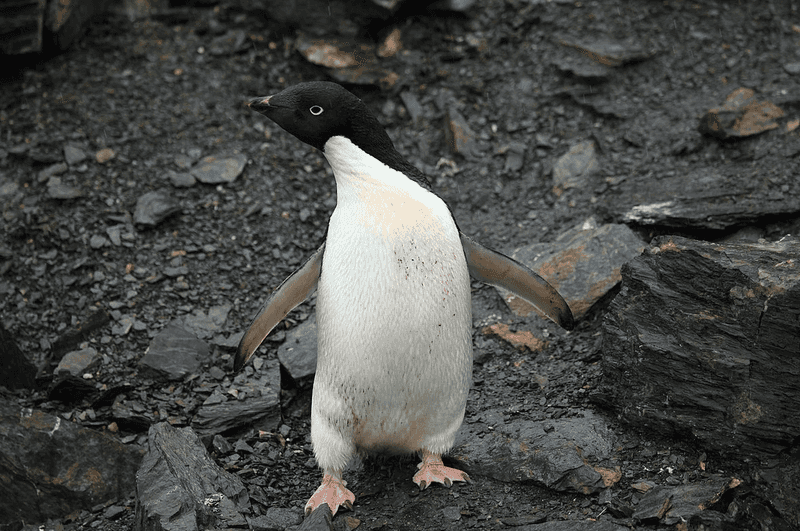
The prehistoric penguin colony, discovered frozen in Antarctica, offers a unique glimpse into the social structure and environment of ancient penguins. Encased in ice, these birds stand together as a testament to their resilience and adaptability to harsh climates.
Scientists are intrigued by the colony’s preservation, which provides insights into the behavior and diet of these early penguins. The ice encapsulating them has preserved not only their physical features but also remnants of their nesting sites and surroundings, offering a comprehensive view of their ecosystem.
This discovery provides valuable information about the evolution of penguins and their adaptation to extreme conditions. The colony serves as a symbol of the enduring spirit of these remarkable birds, connecting us to a time when the icy wilderness was their playground.
As researchers continue to study this frozen colony, they unravel the secrets of these endearing creatures, enhancing our understanding of life’s capacity to thrive in even the harshest environments.
11. Woolly Mammoth (Yuka)
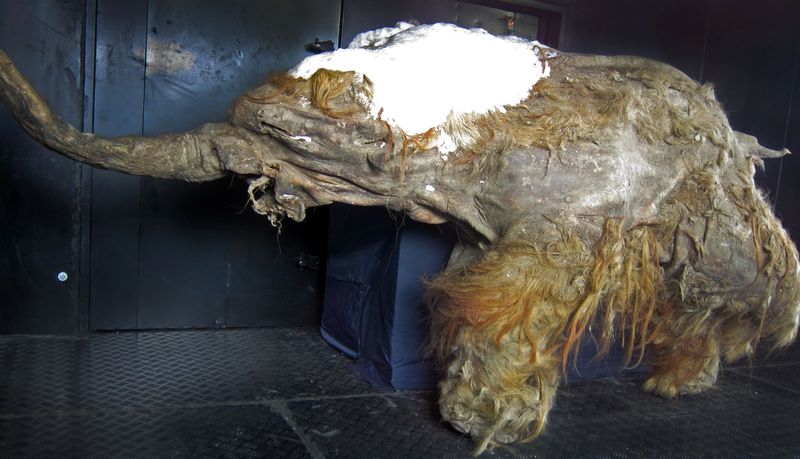
Yuka, a woolly mammoth discovered in Siberia, is one of the most remarkable finds in paleontology. This young mammoth, with its long fur and prominent tusks, offers an unparalleled glimpse into the life of one of Earth’s most iconic creatures. Preserved in ice, Yuka’s remains are so intact that they provide insights into the mammoth’s diet, health, and living conditions.
The discovery of Yuka has allowed scientists to examine its tissues and extract DNA, paving the way for discussions about de-extinction and the possibility of bringing mammoths back to life. The mammoth’s preservation is so detailed that even its last meals are identifiable, offering a snapshot of its final days.
Yuka stands as a testament to the wonders of the natural world and the stories locked within our planet’s frozen depths. Its discovery has captivated the imagination of both scientists and the public, highlighting the incredible journey of exploration and discovery that continues to this day. As we learn more about Yuka, we are reminded of the beauty and complexity of life that has shaped our world.
12. Mummified Cave Bear
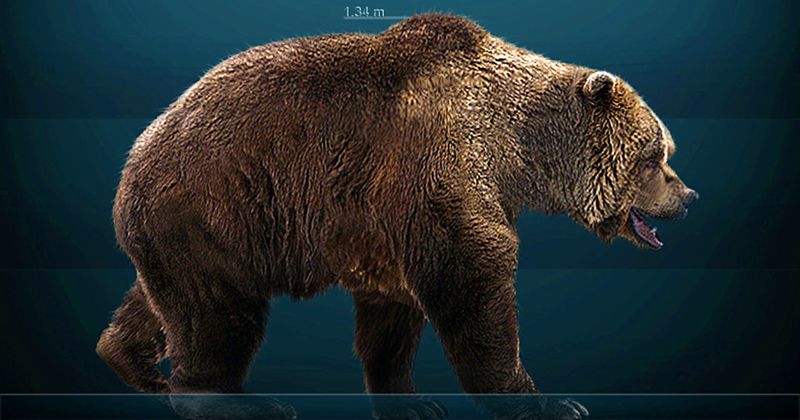
The mummified cave bear, discovered in the frigid landscapes of Siberia, is an extraordinary find. With its dark fur and robust frame, this creature embodies the power and resilience of prehistoric megafauna. Its preservation is so pristine that scientists can study its anatomy, diet, and even its last moments.
The bear’s remains, including intact muscles and organs, offer insights into its health and the environment in which it lived. Researchers are eager to analyze its DNA, hoping to uncover the evolutionary history of this ancient species. The discovery has reignited interest in the Ice Age and the incredible creatures that once roamed the earth.
This mummified cave bear serves as a reminder of the rich tapestry of life that thrived in a time long past. Its frozen form connects us to a world where nature’s giants walked the earth, a world revealed through the lens of time and scientific inquiry. As we delve into the mysteries of this astonishing creature, we gain a deeper understanding of our planet’s history and the forces that have shaped it.


